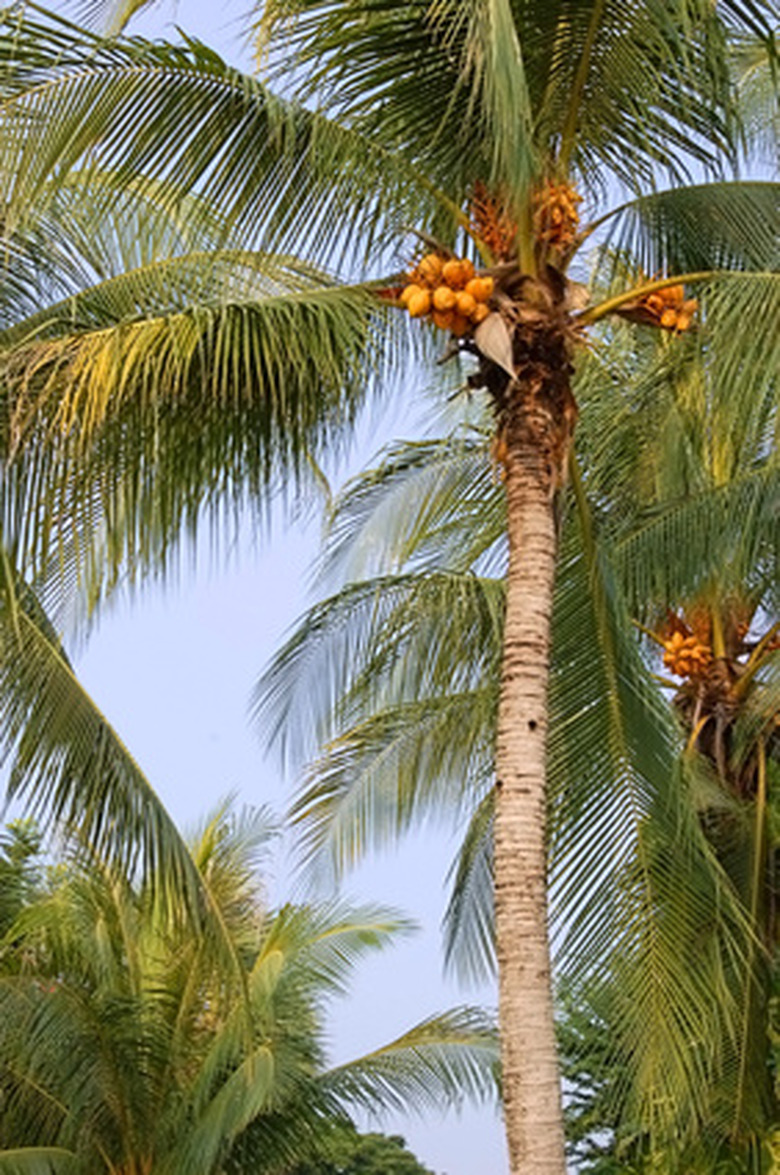Coconut Palm Tree Root Facts
The coconut palm, the sole member of the genus Cocos, is one of the more than 1,500 species of plants in the palm family, Palmaceae. The coconut palm is one of the most useful trees in the world, used for wood, oil, food and fiber. Its unusual roots have evolved to thrive in saline water near oceans and support a slender trunk from 80 to 100 feet high that must withstand the rigors of tropical storms and hurricanes
Adventitious Roots
Coconut palms have adventitious roots. Adventitious roots do not grow from a parent root; they grow instead from the tissues of a plant stem or trunk. In the case of the coconut palm tree, the roots grow from a spot about 15 inches wide at the base the trunk.
Root Bole
The roots of coconut palms do not have cambium tissue that grows lateral roots and root hairs on most roots. Coconut palms have no taproot. Instead, they have numerous, remarkably uniform primary roots about ½ inch wide that grow both deep and to the side, forming a bole that supports the tree.The roots of broadleaf trees grow gradually larger; the roots of coconut palms remain the same size. Roots growing horizontally can spread up to 32 feet.
- The coconut palm, the sole member of the genus Cocos, is one of the more than 1,500 species of plants in the palm family, Palmaceae.
- The roots of coconut palms do not have cambium tissue that grows lateral roots and root hairs on most roots.
Growth
Coconut palm roots grow at the tip. Water and nutrients are absorbed behind the tip though a short stretch of epidermis consisting of a single layer of thin-walled cells. As the cells of this absorptive epidermis grow older, they thicken and lose their ability to accept moisture. They eventually disintegrate, exposing a hard, reddish hypodermis that stores nutrients.
Roots and Water
The roots of the coconut palm have evolved to survive near the ocean. Saltwater is heavier than fresh water. The saltwater just below the sand at the edge of the beach is covered by a thin layer of fresh water. When it rains, the layer of fresh water grows thicker. Although the coconut palm can tolerate saline water, its roots go only deep enough to absorb fresh water.
- Coconut palm roots grow at the tip.
- Although the coconut palm can tolerate saline water, its roots go only deep enough to absorb fresh water.
Roots and Oxygen
In conducting photosynthesis to produce nutritional sugars, plant leaves take in carbon dioxide and give off oxygen. Plant cells need oxygen just as plant cells do. Roots take in oxygen and dispose of carbon dioxide. Coconut roots make this exchange of gases closer to the surface than do the roots of most other plants.
